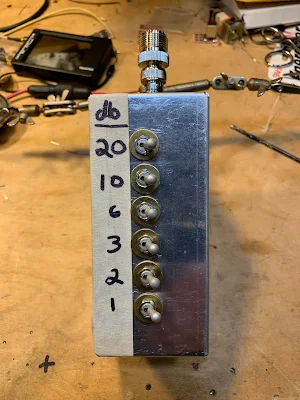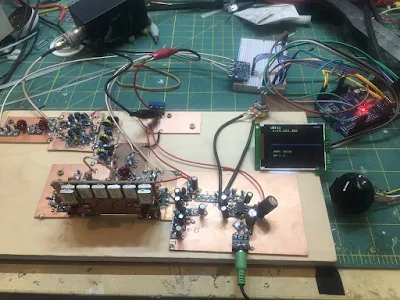It was great to get an update from Martin. He has moved his workshop from Dubai back to Sweden. We have seen lots of homebrew BITX monobanders, but very few homebrew multiband uBITXs. Check out Martin's. Very FB. The input from Farhan was very cool, as was Martin's wise decision to follow Farhan's suggestion and to pause construction once the receiver was working. As Martin put it, "I halted the build for a couple of days and just enjoyed listening." Thanks for the update Martin.
Dear Bill and Pete,
Here comes a long
overdue update from my workbench, my last update was back in March 2017 when I
had completed my first transceiver project.
I did not stop
building and quite soon after I completed the CW transceiver Farhan posted the
first schematics of the uBitx, why not? Why not get into a multiband CW-SSB
transceiver as my next project.
After completing the
receive part I was amazed...
I halted the build for
a couple of days and just enjoyed listening.
When it was time to start on the filters and the main RF Amp I sent Farhan an
email asking about the way forward, he responded like this on May 17th 2017
"martin,
first, let me
congratulate you, i suppose you are the first one to build a ubitx after me! second,
i am not happy at all with the transmit line up, the drivers were not doing a
good job above 14 mhz. i have replaced the 2n2219s with parallel 2n3904s. i
also had to add two more LPFs, for proper harmonic suppression. i am headed for
dayton today. once in dayton, i will try to find time to send you the latest
circuit diagram.
once again,
congratulations on a wonderfully constructed ubitx."
Wow, what a shot in
the arm for a fairly new home brewer!!! I was now back full speed with solder
melting. I completed the filter bank and the RF amp, this is where I am
starting to move away from the published diagram, I believe it is good to make
it your own a little.
The end result was
great, I worked many many stations in Europe and Asia with this little machine
both SSB and CW.
In 2019 we decided to
move back to Europe, the workbench and all boxes with parts and junk together
with the rest of the household found their way into a 40ft container and was
sent of to Sweden.
The A65DC Laboratories became SM0P Laboratories, the iron is still always hot
and there is something brewing here all the time.
Thanks for a brilliant
show boys,
Martin SM0P




























































